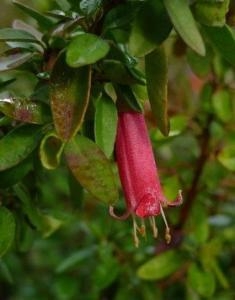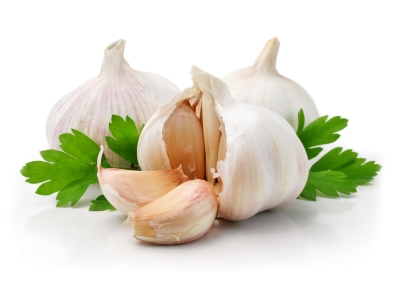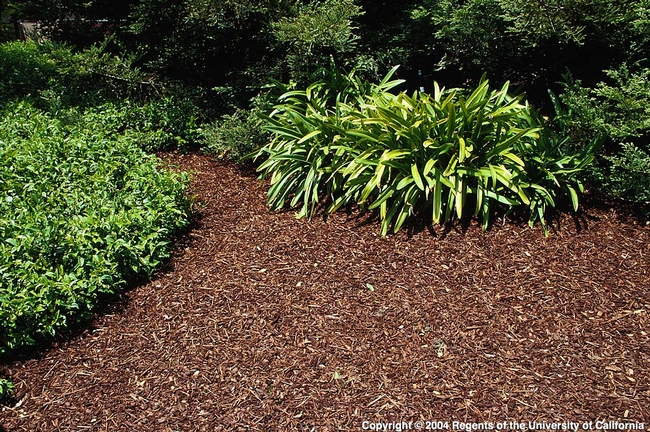
There are some great resources to help you do your homework when planning additions to your garden.
This is an ideal time to add California native plants. The California Native Plant Society has a resource, Calscape, that lists plants that are native specifically to your area. One of my favorites for (zip code) 95037 is Arctostaphylos Dr. Hurd. I love its reddish, crooked branches. At about 15' tall, in sun or shade, it's easy to fit into many gardens. Calscape also lists some annual wildflowers native to Morgan Hill. How about Baby Blue Eyes and Smooth Tidy Tips?
Santa Clara County Master Gardeners have a Waterwise Plant list that gives you great tips about which plants thrive in our area. You can choose based on plant type, and water and sun/shade requirements. They've done the testing for you, and the practical notes about growing conditions and watering are really helpful.
I'm renovating a garden with old oaks and here's what's on my list, that could easily be on your list, even if you don't have oaks. These are all typically easy to find in your local nursery. If you don't see them, they can order for you.
Arctostaphylos Howard McMinn – Howard McMinn manzanita is a native, medium sized (6' x 10') shrub that can be kept smaller by pruning. It is both drought and garden tolerant. I think it's quietly elegant and a graceful addition to any garden. It plays well with lots of other plants.
Correa Dusky Bells and Ivory Bells – I love Australian fuchsias and use them a lot. Dusky Bells is smaller (1' x 3'), with reddish pink flowers. I'm getting attached to Ivory Bells with its creamy white flowers and grey green, felt-like leaves. In the oak garden, it's planted next to A. Howard McMinn and underplanted with Stachys Helen von Stein, with its furry grey leaves, and they look great together.
This same planting bed under the oak includes Rubus pentalobus, a quiet, low dark green carpet, and iris Canyon Snow. There are lots of colors (purple, ochre, pale yellow, bronze) to choose from with our native iris, but I keep going back to the pure white charm of Canyon Snow.
Another area of this garden, includes drifts of Arctostaphylos Carmel Sur. Carmel Sur manzanita is my current favorite, low growing (1' x 4-6') native manzanita. It has glossy green leaves and grows relatively quickly. I'm also adding in Carpenteria californica Elizabeth as part of a mixed border.
When you're looking for inspiration and advice about great plants for your garden, make sure you also check out the UC Davis Arboretum All Stars plants list.
The horticultural staff of the UC Davis Arboretum have identified 100 tough, reliable plants that have been tested in the Arboretum, are easy to grow, don't need a lot of water, have few problems with pests or diseases, and have outstanding qualities in the garden.
Use your local Master Gardeners for advice to grow by! Call our hotline Monday through Friday, 9:30-12:30 at 408-283-3105.
by UC Master Gardener Janet Enright
This article first appeared in the September 21 issue of the Morgan Hill Times.

But what if late summer – and then early fall – happen to slip right by? And there you are with the first week of November staring you in the face. Too late to plant most of the delicious veggies I've listed above, my friend. But no worries, you can still plant garlic! Placed an inch or so beneath the soil, 6 inches from each other, in rows 12-16 inches apart, each clove will wait patiently underground until temperatures are just cool enough to trigger germination. Water your garlic enough to keep the soil moist until you see slender green leaves poking up to remind you that, yes, there is in fact something planted in that bed.
If you plant garlic now, it will be ready to harvest by early summer. Watch for the green tops to turn yellow, which is a good indicator to stop watering them. Allow them to dry out for a week or two in the ground and then lift the bulbs carefully out of the ground. Avoid nicking them as damaged garlic doesn't store well. Find a warm, dry place to hang your garlic for 2-3 weeks, then trim back the roots and top growth. Once the skin of the garlic bulbs feels papery, then it's time to store them in a cool (not too cold or it will sprout), well-ventilated spot. I'm usually able to grow and store enough of garlic to supply my allium-infatuated household for most of the year. In just 60 square feet. And I always set aside a few heads for re-planting in fall.
There are a number of online vendors who sell high quality, organically produced seed garlic. It's usually best to order it several months before planting time, so at this point you may find that their selection is pretty limited. However, even if UPS isn't delivering garlic to your doorstep (I forgot to order mine on time this year) local nurseries and feed stores usually have heads of garlic for sale to save the day. If you've never experienced the juicy, spicy cloves of fresh garlic that snap (not bend) between your fingers, then now is your chance. Go plant some!
by UC Master Gardener Cayce Hill
This article first appeared in the October 12 issue of the Morgan Hill Life.

Garden Design
A few sheets of paper and a garden book or two can help you create a year-round garden design. Begin by drawing a rough draft of an area. Next, pencil in existing perennial plants, structures, lawns, and walkways. Everything else is fair game. Color code the garden design to include sun and wind exposure, access to water, mature plant height, and color to create a workable garden design. This will also help select the best plants for each spot. Also, water use can be significantly reduced by planting varieties with similar water needs together. Put taller plants against a fence, medium-height plants in front of those, and then shorter plants closest to walkways. This makes full use of available soil without blocking anyone's view.
Garden books, online resources, and your local Master Gardeners can help you select plants that will provide flowers, food, and greenery for each season. As one season's plants wind down, the next season will be coming in, providing year-round food and color. Containers, vertical gardens, and raised beds offer extra growing space and extend the growing season.
Edibles and Ornamentals
Morgan Hill weather makes it possible to grow edible and ornamental plants year-round. Cool season greens and cruciferous vegetables prefer our winter and spring. Potato plants offer greenery in the landscape from spring to summer, and potatoes in the fall. Perennial edibles, such as asparagus, fruit trees, bramble fruits, grapes, kiwi, and rhubarb are excellent anchor points in a landscape. Ornamental plants can provide many different shades of green, along with other colors.
Planting it Forward — For Others
In honor of Lily Hardy Hammond's 1916 book, In the Garden of Delight planting it forward also means adding plants that can be gifted to others. Succulents are durable in drought-prone Morgan Hill and they nearly propagate themselves. Cosmos and marigolds go to seed easily. Those and other seeds can be collected and planted as gifts to family and neighbors. They also make welcome gifts to individuals in hospitals and retirement homes. Melon and squash seeds can be started in small pots and gifted to neighbors and local charities.
Learn when to plant edibles for year-round food for your family in Morgan Hill. For more information and classes, check our events page or call 408-282-3105 between 9:30 a.m. to 12:30 p.m., Monday through Friday.
by UC Master Gardener Kate Russell
This article first appeared in the August 17 issue of the Morgan Hill Life.
Do you have an area in your yard where you just can't get anything to grow? Have you struggled repeatedly with a prized plant or tree that just won't thrive? If you know what type of soil you have and are watering properly, it may be time to dig a little deeper to find out what's going on.
Check your soil texture. It dictates the way your soil drains and the amount of nutrients available to your plants. Providing the appropriate amount of water across the entire bed and at the right time also is of utmost importance.
Soil compaction is the next thing to look for. When soil is compacted, the air pockets are compressed, making it harder for roots to expand and grow and therefore harder for the plant to take up water and nutrients. Soil becomes compacted by foot traffic, use of heavy machinery, working the soil in overly wet conditions or when proper amendments — organic matter — haven't been added.
To improve your soil, apply a 2- to 4-inch layer of compost once or twice a year.
Aerating, especially in lawn areas, also can be helpful.
Soil pH is another important factor; it determines how acidic or alkaline the soil is, which affects plant growth, soil bacteria, availability of essential nutrients and soil structure as well.
Acidic soil has a low pH, and extremely low levels can cause a plant to become stunted or die. Plants that thrive in acidic soil include blueberries, azaleas, rhododendrons, hydrangeas, gardenias, camellias, crepe myrtles and pine trees. Adding soil sulfur, peat moss or iron sulfate will decrease the pH level.
Alkaline soil is high in pH and is generally deficient in nitrogen and other important minerals. A high-alkaline soil has higher levels of sodium that may be toxic to plants. Plants that grow in alkaline soil include clematis, heuchera, delphinium and dianthus.
If your plants have pale green or yellowing leaves, that may be a sign of nitrogen deficiency. Plants may be stunted or have much smaller leaves than normal. To increase nitrogen, add good-quality compost; grow cover crops, such as fava beans, borage and vetch, in the offseason; or add coffee grounds to the soil.
The amount of soil organic matter — decomposed plant and animal residues -- really does matter. It has been called the most complex and least understood component of soils. High levels of soil organic matter improve water and nutrient retention; help fend off compaction and erosion; balance pH levels; and even bind harmful pesticides and trace elements, keeping them from polluting our watersheds.
To increase soil organic matter, apply compost and mulch, reduce tillage, leave grass clippings on the lawn and rotate crops in your garden.
Earthworms are an excellent and essential indicator of healthy soil. They create burrows in the soil, allowing water to move through the soil and roots to more easily expand and grow. Dig out about 6 inches of soil and count the number of worms you find. Three to five is a good indication of a healthy soil. If you don't see any, your soil is lacking in organic matter.
By UC Master Gardener Rebecca Jepsen
This article first appeared in the July 20 issue of the San Jose Mercury News.
 Janet Enright
Janet Enright

Check out any of your local nurseries, and you'll find lots of choices right now for colorful perennials that bloom in summer. There are some great options for Morgan Hill gardens that are low water users once established.
Here are two resources to help you decide which plants will work best in your garden.
UC Davis Arboretum All-Stars includes 100 plants that are recommended by the horticultural staff of UC Davis Arboretum. They were selected because they thrive in California's Mediterranean climate and are tough, low-maintenance, and attractive for most of the year.
The UC Master Gardeners of Santa Clara County Water Wise Garden, located at the Palo Alto Demonstration Garden, includes native and non-native ornamental plants that thrive in our summer-dry climate and clay soil without a lot of extra work. Many of the plants on the following list have been grown in the Water Wise Garden. Check out their favorite plants in the Drought Information section. You can learn about specific sun/shade requirements and other useful information to help make your plant selections.
African Daisy
Many varieties of African Daisy bloom during the summer. Some of my current favorites include Arctotis ‘Pumpkin Pie' for a bright orange pop, or Arctotis ‘Pink Sugar' with its pale, shell pink blooms. The soft grey leaves look good even when the plants are not in bloom.
California Fuchsia
There are a number of cultivars of the California native Epilobium, and all of them are hummingbird magnets. The Water Wise Garden is growing Epilobium ‘Select Matteole'; it's a compact grower and doesn't spread. In my own garden, I've planted Epilobium ‘Everett's Choice'.
Foothill Penstemon
Penstemon ‘Margarita BOP' is a very reliable, long-blooming California native. It was selected as a UC Davis All-Star because it does well in average garden conditions.
Monkey Flower
Mimulus is a California native with a wide range of colors including white, yellow, orange, red and maroon. Hummingbirds are frequent visitors. I'm a fan of Mimulus ‘Curious Orange', the yellow Mimulus ‘Pamela', and Mimulus bifidus ‘White'. There are many new cultivars on the market. It's tough to choose just one.
Red Hot Poker
Kniphofias are great for a vertical accent in the garden. I'm partial to the smaller varieties and am currently growing Kniphofia ‘Creamsicle', with orange and creamy yellow flower spikes.
Yarrow
Achillea ‘Moonshine' is a bright yellow, reliable mid-summer bloomer. Yarrow is a visited by both butterflies and beneficial insects, which is a great reason to plant it. California natives Achillea ‘Island Pink' or the white flowering Achillea ‘Sonoma Coast' are also good options.
Be smart about watering your new plants. At the water-wise demonstration garden, new plants are hand-watered once a week for the first year, then every two weeks the following year. Once plants are established (about three years), they are watered once every three weeks in late spring, summer and fall using a drip irrigation system.
Even in drought conditions, you can have a beautiful garden. UC Master Gardeners of Santa Clara County are your resource for learning how to do that. Check out our website for ongoing updates, attend our classes, and learn from and with us about how to help your garden thrive.
by UC Master Gardener Janet Enright
This article first appeared in the June 6 issue of the Morgan Hill Times.


